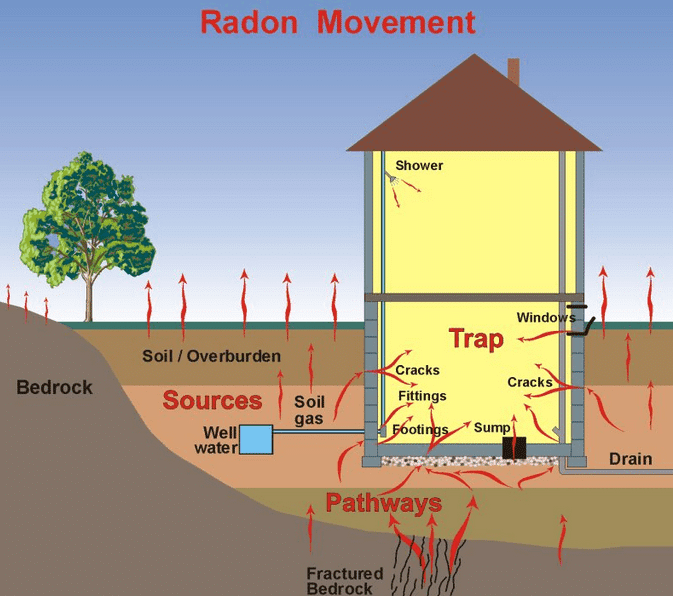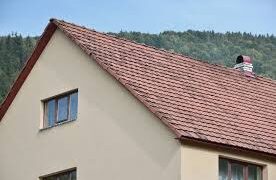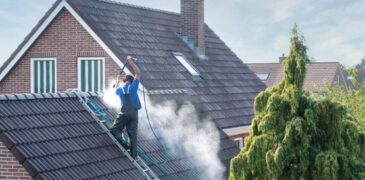How Does Radon Testing Work?
Radon Testing: Radon testing is the only way to know whether your home has high levels of radon, a radioactive gas that can cause lung cancer over time. Here’s what you need to know about radon testing and reducing radon levels in your home.
A decade ago, media hype caused both panic and skepticism about the risks and effects of radon. Now, better research has made two things clear: Elevated levels of radon over a long period of time can cause lung cancer, and there are effective ways to reduce these levels.

While questions still remain over the quantities and length of exposure, radon concerns are a fact of homeownership. Most residential real estate transactions require radon testing, and many states require radon mitigation for new construction. This article will help you figure out whether your home has high radon levels and what you can do to reduce radon levels.
Radon Testing Kit
Safety Siren Pro Series3 Radon Gas Detector
The Safety Siren costs more than most on our list, but it has the features to justify the price. Instead of a one-time monitoring sample, the Safety Siren Pro Series 3 takes air samples every hour and self-tests every 24-hours. This keeps the readings accurate and current.
AirThings Corentium Home Radon Gas Detector
The Corentium Home Radar Detector by AirThings looks like a cell phone and runs a little under $200. It’s battery-operated and portable, and it claims to be accurate even in dusty and humid conditions. Because you get your readings instantly, you won’t need to pay for lab fees or postage stamps to send it off.
- The simple and safe way to test for radon
- EPA-listed under the radon gas measurement efficiency program
- Includes test materials and lab fees, excluding NJ state fees
- Results are available within 72 hours of lab receipt
- Recommended for use only within the United States
What Is Radon Testing
Radon is a naturally occurring radioactive gas. It has no smell, color or taste. Radon is produced from the natural radioactive decay of uranium, which is found in all rocks and soil. Radon can also be found in water.
Radon escapes easily from the ground into the air, where it decays and produces further radioactive particles. As we breathe, the particles are deposited on the cells lining the airways, where they can damage DNA and potentially cause lung cancer.
When someone breathes in radon gas, it goes into their lungs, exposing them to small amounts of radiation. This may damage the cells in the lining of the lungs and increase a person’s risk of lung cancer. The risk is higher in those who have lived for many years in a radon-contaminated house.
Radon is a colorless, odorless, and tasteless gas and therefore is not detectable by human senses alone. At standard temperature and pressure, radon forms a monatomic gas with a density of 9.73 kg/m3, about 8 times the density of the Earth’s atmosphere at sea level, 1.217 kg/m3. Radon is one of the densest gases at room temperature and is the densest of the noble gases.
Here are the 3 main points to removing radon gas
1. Seal up any cracks in your basement walls and floor.
2. Install an exhaust pipe that runs from your basement to the top of your house. (this is the hard part)
3. Install an exhaust fan that pulls air from below your basement floor and out the exhaust pipe.
Radon Testing Cost
Radon gets into your home as the soil or rock beneath your home breaks down over time. This is a naturally occurring process that can happen anywhere at any time. The gas that’s emitted by the breakdown of the uranium rises as it’s produced, flowing straight into the air in your home. It’s estimated that 1 in 5 homes across all 50 states have elevated levels 3 of radon. The only way to find out for sure if your home is affected is to have a radon 2 detection test performed on your air and well water.

Radon detection tests are fairly easy to carry out. Some can be done DIY, while others may require professional assistance. The location of your home, whether or not you have a well, and whether or not you choose to do the test yourself will all impact the final cost. The average cost for testing for radon is around $110, while mitigation services average around $800.
Radon Testing Mn
Radon is a serious public health concern in Minnesota. The average radon level in Minnesota is more than three times higher than the U.S. radon level. This is due to our geology and how our homes are operated. Minnesota homes are closed up or heated most of the year, which can result in higher levels of radon. In Minnesota, more than two in five homes have radon levels that pose a significant health risk.
The Minnesota Department of Health is working with Air Chek to offer test kits for only $9.95. This includes postage, analysis, and a radon test report.
What Are The Symptoms Of Radon In Your Home?
- persistent cough.
- coughing up blood.
- wheezing.
- shortness of breath.
- hoarseness.
- chest pain, especially when you cough or laugh.
- frequent infections such as bronchitis and pneumonia.
Is Radon Testing Necessary?
The EPA recommends that all houses be tested for radon levels during the point of sale. In most cases, the buyer will request the radon test results from the seller as part of the home inspection. Sellers, however, may conduct radon testing before listing their home for sale.
What Causes Radon Gas In Houses?
Radon is a radioactive gas that has been found in homes all over the United States. It comes from the natural breakdown of uranium in soil, rock, and water and gets into the air you breathe. Radon typically moves up through the ground to the air above and into your home through cracks and other holes in the foundation.
How Is Radon Tested?
Radon gas has no smell or color so a test must be done to detect it. Long-term tests will yield better information on a home’s average year-round radon levels. Radon test devices are placed in the lowest occupied level of the home.




